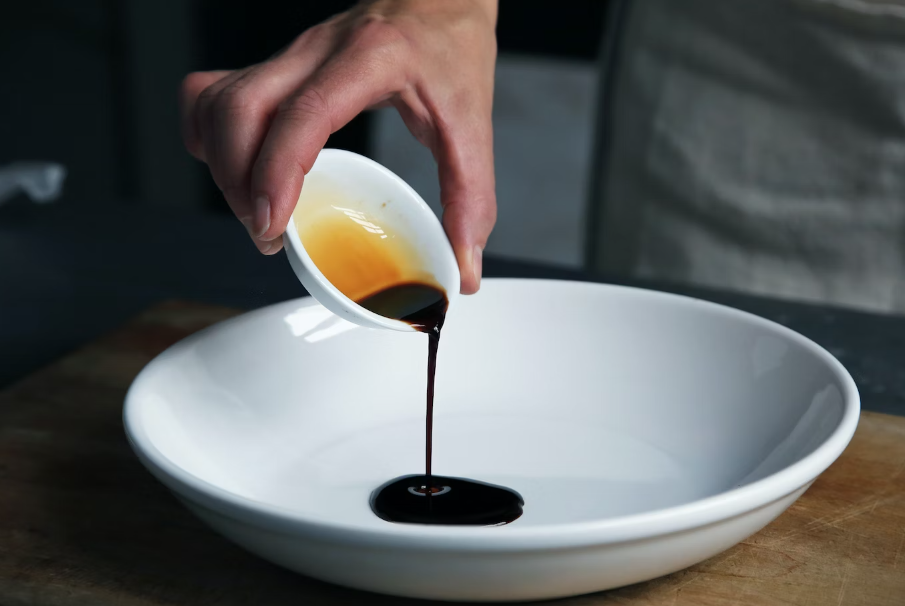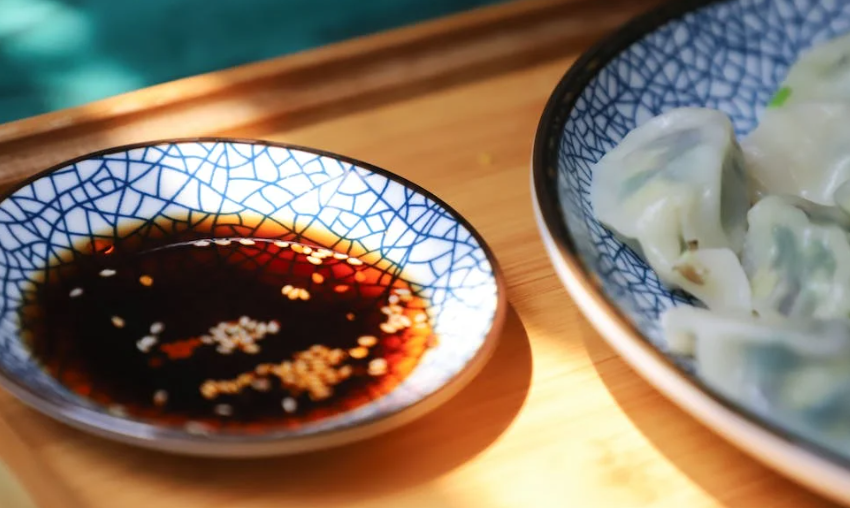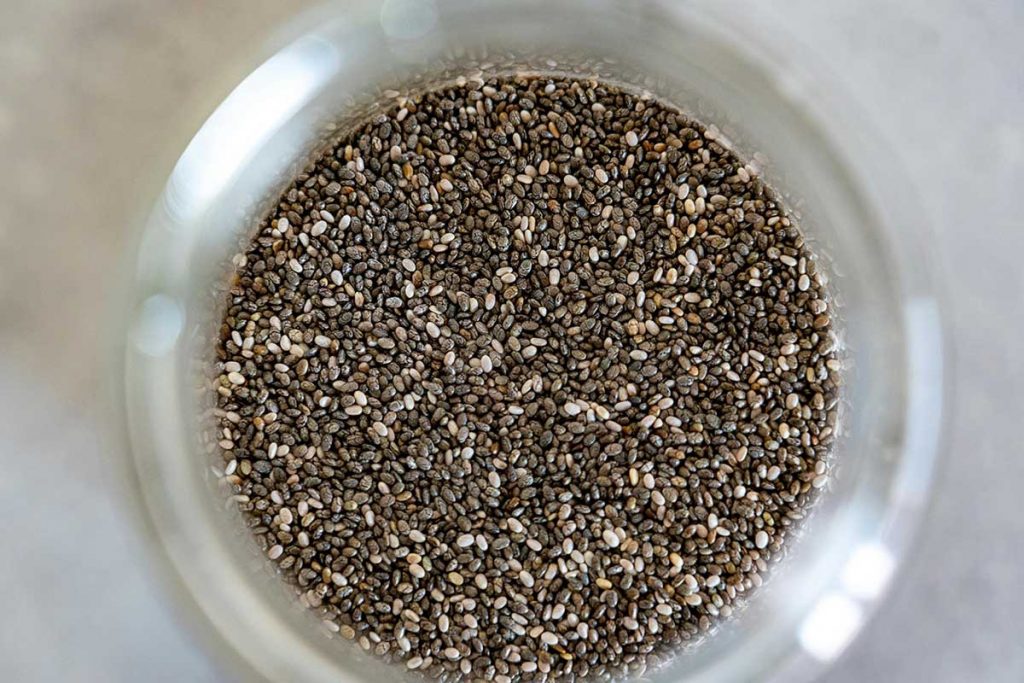Truth or Hoax: Can Soy Sauce Kill You?

© CA Creative / Unsplash
Soy sauce, the yummy delight from Asia that makes our food taste even nicer, is not as good as one might think. So, if you are wondering “Can soy sauce kill you?”, the answer is complicated. One thing is for sure though, don’t go overboard with soy sauce! Recent cases show that too much of it, thanks to the high salt content, can be seriously bad for you. This is even to the point where soy sauce can kill you. You are probably not going to chug enough to cause trouble in normal use, but here is how you can avoid any major damage to your body.
What Is Soy Sauce?
Soy sauce is a popular and versatile condiment that originated in China and is widely used in East Asian cuisine. It is made from fermented soybeans, wheat, salt, and water. The process of making soy sauce typically involves several stages of fermentation and aging. The mixture undergoes a fermentation process, during which naturally occurring microorganisms, such as bacteria and yeast, break down the sugars into alcohol and other compounds. This creates a liquid known as moromi.

The moromi is pressed to extract the liquid, which is then filtered to remove solids. The liquid is pasteurized to stop the fermentation process and is then aged for a period, which can range from a few months to several years. The aging process contributes to the development of flavors and the dark color of the soy sauce. After aging, the soy sauce is often blended to achieve the desired flavor profile and consistency. It is then bottled and ready for consumption.
Types of Soy Sauce
Soy sauce comes in different varieties, such as light soy sauce, dark soy sauce, and tamari. Light soy sauce is lighter in color and has a saltier taste, while dark soy sauce is aged longer, resulting in a richer flavor and darker color. Tamari is a Japanese variant that is often gluten-free and has a slightly different taste than regular soy sauce.
Origins of Soy Sauce
Soy sauce has its origins in China, and its history dates back over 2,500 years. The exact origins are a bit unclear, but it is generally believed to have originated in the Western Han dynasty in China around the 3rd century BCE. The process of making soy sauce likely evolved.
The original Chinese soy sauce, known as “jiang,” was made by fermenting a mixture of soybeans and grains. Over the centuries, the production methods spread to other parts of East Asia, including Japan, Korea, and Southeast Asian countries.
In the 7th century, during the Tang dynasty, Chinese diplomats and travelers brought soy sauce to Japan, where it underwent further development and became a key condiment in Japanese cuisine. The Japanese developed their own varieties of soy sauce, such as shoyu.
What Is It Used For?
Soy sauce is a fundamental seasoning in many Asian cuisines. It adds a savory, umami flavor to dishes and enhances the overall taste. It is often used as a key ingredient in marinades for meats, poultry, seafood, and tofu. The salty and flavorful nature of soy sauce helps to infuse and enhance the taste of the ingredients. Additionally, it is a staple in stir-fry dishes. It is added during the cooking process to flavor and season the ingredients. Light soy sauce is commonly used in stir-fries.
It is frequently used as a dipping sauce for sushi, sashimi, dumplings, spring rolls, and other appetizers. In some cases, soy sauce is mixed with other ingredients like wasabi, ginger, or rice vinegar to create a more complex dipping sauce.
How Soy Sauce Made Its Way to Other Countries
Soy sauce also found its way to Korea, where it is called “ganjang,” and to other parts of Asia, adapting to local tastes and preferences. As trade routes expanded and cultural exchanges increased, soy sauce made its way to various parts of Asia. The Silk Road, for example, played a crucial role in the exchange of goods and ideas, allowing soy sauce to spread beyond China to regions like Japan and Southeast Asia.

Soy sauce became more widely known in the Western world in the 19th and 20th centuries, with increased globalization and interest in Asian cuisines. Today, it is a globally used condiment with a rich history rooted in Chinese and East Asian culinary traditions.
Can Soy Sauce Actually Kill You?
Soy sauce, a flavor enhancer for over 2,000 years, has maintained its essence. However, excessive consumption is risky due to its high salt content, with a single tablespoon containing around 900 milligrams. Ingesting too much soy sauce has led to documented cases of health issues, surpassing the body’s salt tolerance. So in hindsight, soy sauce can kill you.
In 2013, a 19-year-old consumed a dangerously large amount of soy sauce, approximately one quart (1L). This excessive intake led to a coma, prompting an urgent hospital visit. Fortunately, quick medical intervention helped him recover, though he faced three challenging days. The incident resulted in hypernatremia, a condition causing issues like fluid accumulation in the lungs and abnormal bleeding in the brain.
In another case, a woman, despite consuming less soy sauce than the 2013 incident, tragically did not survive. She succumbed to the negative effects of excessive sodium intake, experiencing pulmonary edema and severe brain damage leading to her death.
How Deadly Is It Really?
The lethal threshold of 7 or more tablespoons of soy sauce for a 150-pound person is due to the extremely high sodium content in soy sauce. Excessive sodium intake can lead to hypernatremia, a condition where there is too much salt in the body. This imbalance can result in water retention, putting strain on the heart and causing complications such as pulmonary edema and severe brain damage, as seen in documented cases.
While it may be challenging for an average healthy American to consume a lethal amount of soy sauce, it is essential to be aware of the potential risks associated with excessive sodium intake.
What Are Some Soy Sauce Alternatives?
While high-sodium products like soy sauce can pose health risks, our bodies still need a small amount of sodium for daily functioning. If you’re looking to reduce sodium intake but crave flavorful alternatives, consider these options:
- Tamari: A Japanese soy sauce variant with a higher soybean concentration, resulting in lower sodium content.
- Worcestershire sauce: Although not vegan or vegetarian, it is lower in sodium.
- Miso: Made from fermented soybeans and salt, it has a lower sodium content per serving.
- Umeboshi Vinegar: A fermented plum vinegar popular in Japan.
- Coconut Aminos: A lower sodium and vegan option.
- Marmite or Vegemite: Marmite, a salty-flavored yeast extract, is a viable option and is found in most local supermarkets or health food stores.
- Nutritional Yeast: Not only a lower sodium option but also rich in vitamins like Vitamin B12.
- Tomato paste: Adds a flavorful and acidic layer to dishes.
- Dashi: A seaweed-based soup broth commonly used in Japanese cuisine.
- Salt: While essentially pure sodium, using powdered or rock salt allows for better portion control compared to liquid soy sauce.
The lesson learned here is that everything (including good things) needs to be taken into consideration. So, it is best to lay off any high amounts of sodium in general. Will you be consuming less soy sauce after this information?
You might also want to read: How Much Protein Intake Do You Actually Need?



